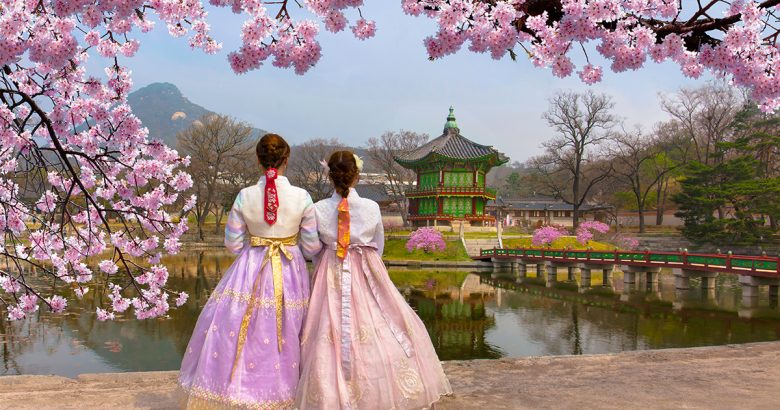
Hanbok and flowers
When the icy streets and snow-covered landscapes finally melt away with the first breath of the West Wind. When, amongst the browns of dead leaves and withered grass, there can be found just the tiniest burst of vibrant green. When the heavy darkness finally gives way to the first warm rays of sunlight, we know that spring has come.
Even though spring and fall are rather short-lived in comparison to the extreme weathers of summer and winter, the Republic of Korea is fortunate in that it experiences all four seasons in all their unique beauty and charm. Each season brings with it new sights, fashions, cuisine, and activities, and there is never a dull moment no matter when you may find yourself on the peninsula.
Spring in Korea is much like any other country. It is the season of rebirth and renewal. A fresh start. And one of the harbingers of Korea’s springs are the flowers that bloom unabashedly wherever you may happen to look. Even amongst the towering skyscrapers of Seoul there seem to be flowers sprouting even between the cracks in the sidewalk, bold in their determination to be seen as they take on the very important responsibility of ushering in the new season.
What kind of flowers can be seen in the Republic of Korea? And what meanings do they hold?
Mugunghwa (무궁화)
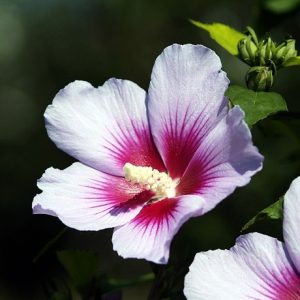
Mugunghwa
Mugunghwa is Korea’s national flower, and is most likely to be the first thing that comes to anyone’s mind when they are asked to think about the country’s flora. Rightfully so, Korea has dubbed itself geunhwahyang (근화향), or “Country of Mugunghwa,” given just how bountifully the blossoms bloom all across the country. They are so abundant, in fact, that it is not uncommon to simply see their signature bright, large petals even on the side of the road. The flower ranges in color, all the way from pure white to the most lush of pinks, and is a relative of the hibiscus, blooming usually from July to September.
The term mugung means “eternal,” with the flower symbolizing Korea’s everlasting prosperity. It is also a very important symbol of Korea’s resilience and strength over time, acting as the symbol of Korean independence during the period of Japanese occupation. Much like the people of Korea, this flower has seen its own fair share of trials and tribulations, but has persisted until this very day and continues to give hope for an even brighter tomorrow.
Cherry Blossom (벚꽃)
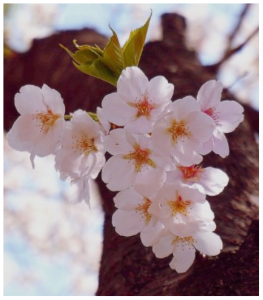
Cherry Blossom
There is no sight more representative of spring than the small white and pink blossoms of the cherry blossom trees. Starting from the southern island of Jeju-do and moving north, the flowers open all over the country to a welcoming fanfare from Koreans, celebrated through all sorts of festivals that are held during their full bloom. People of all ages flock to where the blossoms are most abundant, being sure to take plenty of photos while they welcome spring with friends and family. However, the lifespan of the cherry blossom is awfully short, often only staying in full bloom for around a week. So if you plan to see them at their fullest, there is no time for hesitation on the matter.
While there are many varieties of cherry blossoms, the type that can mainly be found throughout Korea is grown on the wangbeot namu (왕벚나무), a species of tree that is native exclusively to Korea. Its name means “the king cherry blossom tree,” fitting for such a sturdy and robust tree. If you happen to find yourself climbing up Seoraksan Mountain in the springtime, chances are you will most definitely see one of the wangbeot namus in all of their beauty.
If you know that you will be in Seoul specifically during cherry blossom season, here are a couple famous spots that are worth visiting:
- Seokchon Lake (석촌호수): located right next to Lotte Mall on the south side of the Han River, this is a popular spot for viewing cherry blossoms, with the perimeter of the lake absolutely lined with the pink buds. While the walking path may seem a bit narrow when it becomes completely filled with cherry blossom enthusiasts, the sight of the cherry blossoms arching over the ocean of people is rather magical and is like something straight from a fantasy book.
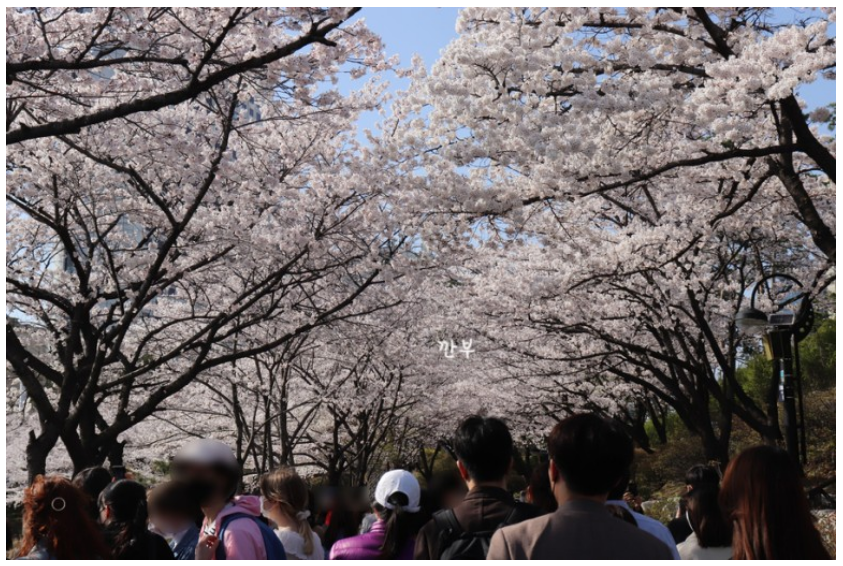
Seokchon Lake
- Yeouido (여의도): Arguably the most well-known spot for cherry blossom viewing, Yeooudo is home to one of the most anticipated cherry blossom festivals in Seoul. Located right next to the Han River, there is nothing better than getting your fill of cherry blossoms before stopping to sit with your friends or family along the river and have a picnic as you watch the sun set.
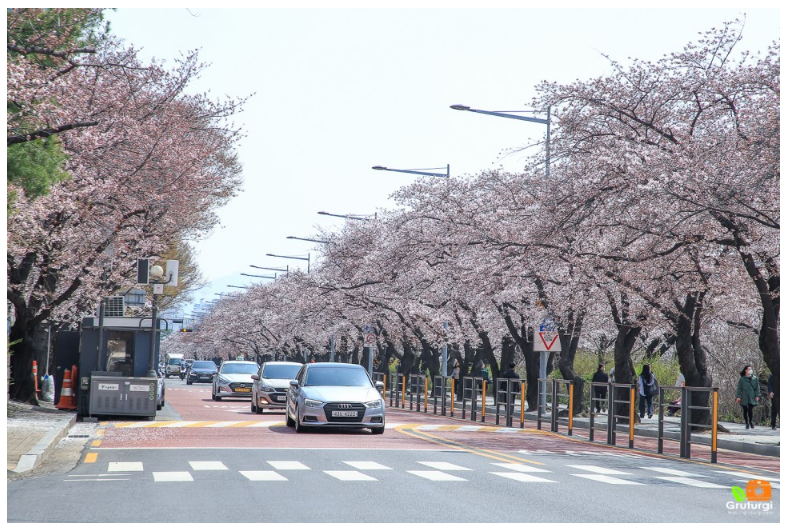
Yeouido
- Yangjaecheon (양재천): Yet another spot for all sorts of festivities, Yangjaecheon is a stream that stretches along the southern region of Seoul, its clear waters flanked on either side by the bright pinks and whites of the cherry blossoms. What would be more perfect than taking a stroll along the stream under the shade of the cherry blossom trees?
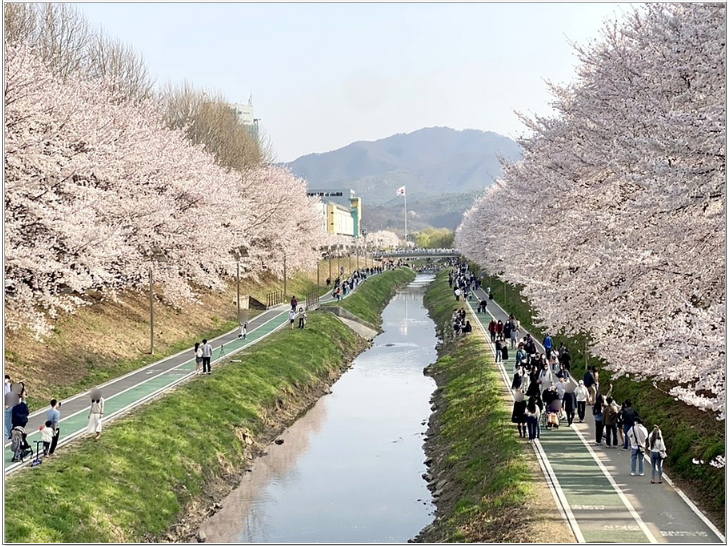
Yangjaecheon
Gaenari (Korean forsythia, 개나리)
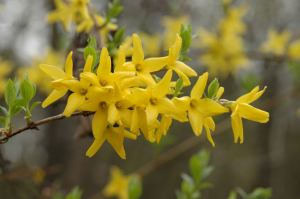
Gaenari (Korean forsythia)
Another sign that spring has come is the sight of the bright yellow petals of the gaenari. This flower is known mainly for its resilience, one of the first to bloom in the spring due to its ability to withstand even the cold temperatures of late winter. The gaenari carries the meaning of hope, more than fitting as it ushers in the regrowth and renewal of spring. These yellow blossoms are the subject of many children’s songs, poems, and works of art, the sight of them invoking a feeling of warmth and comfort that is more than welcome after the long winter.
Geumgang Blue Bell (금강초롱꽃)
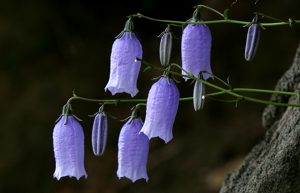
Geumgang Blue Bell
The official name of this flower is Hanabussaya asiatica Nakai, named after the surnames of the first Japanese minister to reside in Korea and another Japanese botanist. Even though this flower is endemic to Korea, it was given such a name due to the body of botanical research being done while Korea was under Japanese occupation in the first half of the 20th century. However, you should not let this name fool you. The geumgang blue bell is a plant that can only be found on the Korean peninsula and nowhere else. When the Republic of Korea hosted the G20 Summit in 2010, the geumgang blue bell was used in the event’s official logo.
This flower got its name after being discovered on Geumgangsan Mountain (금강산), its shape reminiscent of the traditional Korean lanterns that were covered with a red and blue silk shade called cheongsachorong (청사초롱). Since it is not as common of a flower as the others mentioned so far, it is a bit harder to spot these unique blossoms, mostly being found in the various mountains of Korea. Despite that, they are a sight to behold once you do see them, and are truly deserving of the title of one of Korea’s most prized flowers.
Jindallae (진달래)
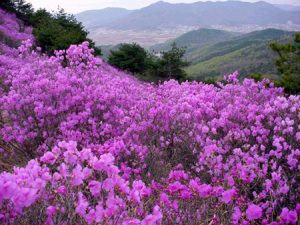
Jindallae
The bright and rich magenta petals of the jindallae, or Korean azalea, stand out strikingly against the greenery of spring. Its flowers actually bloom before its leaves, and it is another tenacious blossom that withstand even the harshest of environments. Its beauty and charm have been captured in many works of poetry and music, one of the most notable being Kim So Wol’s poems “Jindallae Flower” <진달래꽃>, that was published in 1922. Along with being a beautiful thing to look at, the jindallae is also well known for its diversity in how it can be used. Its flowers can be used in making alcohol as well as a type of flower jeon (전) called hwajeon (화전).
The jindallae is a beloved flower of Korea, but is also a melancholic symbol of the country that was lost during Japanese occupation. But like the jindallae, the Korean people were resilient above all else, showing a strength and fighting spirit that helped them persist even within the most hopeless of situations. It is no wonder this flower holds such a special place in the hearts of many Koreans.
These have been only five of the hundreds, possibly even thousands, of species of flowers that populate the Korean peninsula. While the charms of the big city and modern technologies are more than enough to steal your attention away, it is important not to forget to stop and smell the roses every now and then.
Written by : Allison Garbacz
From Illinois, United States. Current 5th-year undergraduate at the University of Wisconsin-Madison, B.A. Candidate for Linguistics, B.A. Candidate for Asian Languages and Cultural Studies, Exchange student at Korea University, Intern at VANK (Voluntary Agency Network of Korea)